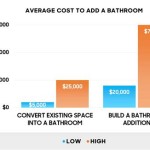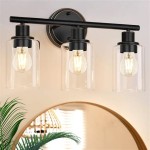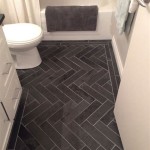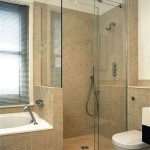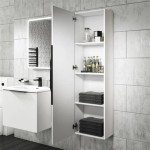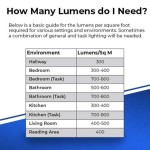Best Towel Warmer For Bathroom: A Comprehensive Guide
A towel warmer, once considered a luxury, is rapidly becoming a sought-after bathroom fixture. Beyond simply providing warm towels after a shower, these devices offer a range of benefits including reducing moisture, preventing mildew growth, and adding a touch of spa-like comfort to the daily routine. Selecting the ideal towel warmer involves evaluating various factors, including heating method, mounting style, size, material, and energy efficiency. This article provides a detailed exploration of these key considerations to assist in identifying the best towel warmer for individual bathroom needs.
Understanding Types of Towel Warmers: Electric vs. Hydronic
Towel warmers primarily operate using two distinct heating methods: electric and hydronic. Each type presents unique advantages and disadvantages regarding installation, operational cost, and performance.
Electric Towel Warmers: These units operate independently from the central heating system and rely on electricity to generate heat. They are generally easier to install, requiring only a nearby electrical outlet or hardwiring. Electric towel warmers heat up quickly and offer localized heating, allowing them to be used even when the central heating system is off. They come in two main subcategories: plug-in and hardwired. Plug-in models are the simplest to install as they simply plug into a standard outlet. Hardwired models, however, offer a cleaner aesthetic and are directly connected to the electrical system, eliminating the visible cord. The operational cost of electric towel warmers tends to be higher than hydronic models due to electricity consumption.
Hydronic Towel Warmers: These towel warmers connect to the home's central heating system, utilizing hot water circulation to warm the towels. Installation is generally more complex and requires professional plumbing expertise. Hydronic systems are more energy-efficient than electric models, particularly when the central heating system is already in operation. However, they only function when the central heating system is running, making them less suitable for use during warmer months when no overall heating is needed. The initial investment for a hydronic system is usually higher due to the installation costs.
Analyzing Mounting Styles: Wall-Mounted, Freestanding, and Over-the-Door
Towel warmers are available in various mounting styles to accommodate different bathroom layouts and space constraints. The choice of mounting style significantly impacts installation requirements and the overall aesthetic of the bathroom.
Wall-Mounted Towel Warmers: These are the most common type, offering space-saving convenience and a clean, streamlined appearance. They are securely attached to the wall, typically at a height that allows for easy access to the warmed towels. Wall-mounted models are suitable for both small and large bathrooms and are available in a wide range of sizes and designs. Installation requires careful planning to ensure proper wall support and, in the case of hardwired electric models or hydronic models, access to electrical wiring or plumbing connections.
Freestanding Towel Warmers: These units are portable and can be placed anywhere in the bathroom that has a power outlet (for electric models). They do not require any wall mounting and offer flexibility in terms of placement and repositioning. Freestanding models are ideal for individuals who rent their homes or for those who prefer not to undertake permanent installations. However, they occupy floor space, which may be a limiting factor in smaller bathrooms. Stability is also important for freestanding models, so ensure a sturdy base is included.
Over-the-Door Towel Warmers: These are designed to hang over the bathroom door, maximizing space utilization. They are a practical option for small bathrooms with limited wall or floor space. Installation is straightforward as they typically require no tools or drilling. Over-the-door models are generally electric and may have a lower heating capacity compared to wall-mounted or freestanding units. Weight capacity of the door and the structural integrity are key considerations.
Evaluating Key Features: Material, Size, and Control Options
Beyond the heating method and mounting style, several other features contribute to the overall performance and user experience of a towel warmer. These include the material used in construction, the size of the unit, and the available control options.
Material: The material used in a towel warmer impacts its durability, thermal conductivity, and aesthetic appeal. Stainless steel is a popular choice due to its resistance to corrosion, durability, and ability to conduct heat efficiently. Chrome finishes offer a sleek, modern look, while brushed nickel and other finishes provide alternative aesthetic options. The quality of the material and finish directly influences the longevity and resistance to rust, especially in humid bathroom environments.
Size: The size of the towel warmer should be proportionate to the bathroom size and the number of towels intended to be warmed. A larger unit with more bars can accommodate more towels but may require more wall space or floor space. Consider the dimensions of the bathroom and the available space before selecting a towel warmer. The distance between the bars is also an important factor; adequate spacing promotes better air circulation and more even heating of the towels.
Control Options: Towel warmers offer a variety of control options, ranging from simple on/off switches to advanced programmable timers and temperature settings. Timers allow for pre-set heating schedules, optimizing energy consumption and ensuring warm towels when needed. Temperature controls allow for adjusting the heat output to the desired level. Some models also feature safety mechanisms such as overheat protection and automatic shut-off functions. Digital displays and remote controls provide added convenience and ease of use.
Assessing Energy Efficiency and Safety Considerations
Energy efficiency and safety are crucial considerations when selecting a towel warmer. Choosing an energy-efficient model can minimize operational costs, while prioritizing safety features protects against potential hazards.
Energy Efficiency: The energy consumption of a towel warmer depends on its heating method, size, and usage patterns. Electric towel warmers generally consume more energy than hydronic models, but energy-efficient electric models are available with features such as timers and temperature controls to minimize power consumption. Look for models with low wattage ratings and energy-saving modes. Consider the frequency of use and program the timer accordingly to avoid unnecessary energy expenditure.
Safety Considerations: Electrical safety is paramount when dealing with any electrical appliance in the bathroom. Ensure that the towel warmer is certified by recognized safety standards organizations, such as UL or ETL. Hardwired electric models should be installed by a qualified electrician to ensure proper grounding and wiring. Avoid overloading electrical circuits and never use extension cords in damp environments. Overheat protection and automatic shut-off functions are essential safety features that prevent overheating and potential fire hazards. For hydronic models, professional plumbing installation is vital to prevent leaks and ensure proper connections to the central heating system.
Exploring Additional Features and Aesthetics
Beyond the core functionality and safety aspects, additional features and aesthetic considerations can further refine the selection process. The aesthetic appeal of the towel warmer can complement the overall design of the bathroom, while additional features can enhance user convenience.
Aesthetics: Towel warmers are available in a wide range of styles and finishes to match various bathroom aesthetics. From sleek, modern designs with clean lines to more traditional styles with ornate details, there is a towel warmer to suit every taste. Consider the existing fixtures and finishes in the bathroom when selecting a towel warmer to ensure a cohesive and harmonious look. The color, shape, and style of the towel warmer can significantly impact the overall ambiance of the bathroom.
Additional Features: Some towel warmers come with additional features such as aromatherapy diffusers or integrated shelves for storing toiletries. Aromatherapy diffusers allow for adding essential oils to create a relaxing and spa-like atmosphere. Integrated shelves provide convenient storage for towels, robes, or other bathroom essentials. These additional features can enhance the overall user experience and add value to the towel warmer.
By carefully evaluating these factors, individuals can select the best towel warmer for their specific bathroom needs and preferences. A well-chosen towel warmer will not only provide warm, comfortable towels but also enhance the overall comfort and functionality of the bathroom.

7 Best Towel Warmers 2025 Reviewed

8 Bar Wall Mounted Electric Plug In Towel Warmer With Space Heaters Heated Rack For Bathroom Matte Black Wh Ts100 Hd The Home

The Best Towel Rails To Maximise Space In Your Bathroom 2024

7 Best Towel Warmers 2025 Reviewed

12 Bar Wall Mounted Electric Plug In Towel Warmer Heated Rack For Bathroom Matte Black

Contemporary Towel Warmer 35 1 2 X 19 Brushed Nickel 8324256

8 Bar Wall Mounted Electric Plug In Towel Warmer With Space Heaters Heated Rack For Bathroom Matte Black Wh Ts100 Hd The Home

Costway Towel Heater Bucket Bathroom 21l With Flip Top Lid Auto Shut Off White Gray

The Best Towel Rails To Maximise Space In Your Bathroom 2024

8 Best Towel Warmers Of 2024 Tested Reviewed
See Also

